Best Leica Cameras in 2025

Leica cameras are synonymous with photography at its purest and most luxurious. Since the company’s inception over a century ago, Leica’s signature red dot has come to represent quality, heritage, and unmatched craftsmanship. For photographers, owning a Leica is far more than just acquiring another piece of gear—it’s stepping into a legacy that has helped shape photographic culture. Though Leica’s price points remain at the upper end of the market, the value lies in their legendary build quality, timeless operation, and the unique shooting experiences they offer.
Whether you shoot digital or film, seek classic manual control or modern convenience, Leica caters to nearly every photographic desire. Each model in the Leica lineup is meticulously engineered—ranging from immaculate digital rangefinders and high-performance mirrorless cameras to compact street companions, analog classics, and stylish instant cameras. That breadth of offering, and the distinct photographic character baked into each camera, is why legendary photojournalists and contemporary creators alike have made Leica their brand of choice.
In this definitive guide, I draw on years of professional experience shooting with almost every Leica currently available. We’ll explore the top models—from the peerless SL3 and portable Q3 to the revered M-series and accessible D-Lux 8—breaking down their strengths, quirks, and ideal users. If you are seeking the finest imaging tools and can appreciate the craft behind a camera, Leica is impossible to ignore.
1. Leica SL3 — Best Overall & Best Mirrorless

Specifications
- Type: Mirrorless
- Sensor: 60MP full-frame CMOS
- Lens Mount: L-mount
- Continuous Shooting: 10/20 fps
- Max Video Resolution: 8K/60p, 4K/120p
- User Level: Professional
Pros
- Outstanding image quality with triple-resolution sensor
- Advanced phase-detect autofocus
- 8K video with pro-grade codecs
- Fully customizable menu and controls
- Robust build quality, weather sealed
Cons
- Disappointing battery life for extensive fieldwork
- Only a tilt, not a vari-angle, touchscreen—awkward for low/high angles
- High entry price, especially when factoring in lens costs
Buy It If
- ✅ You want the absolute best both for stills and video—Leica’s flagship mirrorless platform leaves nothing on the table.
- ✅ You’re after color science and dynamic range few brands can match.
- ✅ You prefer a professional, DSLR-style body with substantial grip and robust handling.
Don’t Buy It If
- ❌ You demand long battery life for extended on-location shoots, especially for video.
- ❌ You need a fully articulating screen for vlogging, creative angles, or self-recording.
In Depth Review
The Leica SL3 marks a decisive evolution in Leica’s mirrorless line—no longer just a “luxury Panasonic,” this model is every inch a professional tool with unmistakable Leica DNA. The 60MP triple-resolution sensor lets you opt for max detail or lower-res files for speed—without sacrificing the whole sensor area. This makes it adaptable for everything from high-end commercial shoots to efficient day-long work.
A defining improvement with the SL3 is its autofocus, now driven by phase-detect technology. It’s fast, precise, and a leap ahead of contrast-only models, though not for ultra-fast sports action. Video performance sets a new high for Leica, offering crisp 8K recording and serious color depth, paired with a pro-level HDMI port and dual media slots (CFexpress Type B and SD). Photographers and videographers alike will appreciate the clean, highly customizable UI and complete tactile control, true to Leica’s philosophy.
Its ergonomics are classic “pro body,” weatherproof and substantial in hand, inspired by DSLR shapes but leaner. The only real drawback is modest battery life—a trade-off for the power-hungry sensor and processing—but with sensible management, it’s an acceptable compromise for such performance. For professionals who refuse to compromise on image quality, and for those on the hunt for a mirrorless system that truly stands out, the Leica SL3 sets the pace at the high end of the market.
Best For
- Professional photographers and filmmakers
- Studio and landscape shooters demanding ultimate resolution
- Leica fans stepping from M-series to modern mirrorless
Leica SL3 Mirrorless Camera at B&H, Adorama.
2. Leica Q3 — Best Compact Leica

Specifications
- Type: Compact fixed-lens
- Sensor: 60MP full-frame CMOS
- Lens: Summilux 28mm f/1.7 (fixed)
- Viewfinder: EVF
- LCD: 3-inch articulating touchscreen
- Continuous Shooting: 15 fps
- Max Video Resolution: 8K30p, 4K60p
- User Level: Enthusiast/Pro
Pros
- Superb image quality and exquisite color rendering
- 8K/4K video in multiple codecs
- Fast, intuitive autofocus with subject recognition
- Elegant, pocketable design
Cons
- Animal detection in AF unreliable
- Small grip, uncomfortable during prolonged use without accessory
- Premium pricing
- Lens focal length cannot be changed
Buy It If
- ✅ You savor 28mm shooting—the lens defines this camera.
- ✅ Portability and discretion are key; perfect for city, travel, and street work.
- ✅ You want high-res stills and professional-grade video in a single, stylish package.
Don’t Buy It If
- ❌ You require flexibility in focal lengths—zoom and lens swapping not possible.
- ❌ You prefer an optical viewfinder over EVF.
In Depth Review
Few compact cameras embody Leica’s ethos so fully as the Q3. The pairing of a 60MP full-frame sensor with the razor-sharp 28mm f/1.7 Summilux lens creates images with astonishing detail, creamy backgrounds, and beautiful Leica character. The digital crop feature effectively lets you frame at multiple lengths up to 90mm, but the magic is in using the full 28mm for storytelling and immersive scenes.
Autofocus has seen real progress with intelligent object and face detection, offering consistent performance for street, documentary, and travel photographers. Video is no afterthought—8K capture, robust stabilization, and rich color options mean the Q3 can handle ambitious filmmaking as well, though shakes during handheld shooting are noticeable at times.
While the camera is intuitive and compact, heavy glass and minimal grip necessitate an optional accessory for true comfort during extended outings. Design is classic Leica—understated, solid, and sophisticated. The price is no small matter, yet considering what the Q3 delivers in both artistry and engineering, it is hard to find a rival in the luxury compact market.
Best For
- Discerning street and documentary shooters
- Travelers wanting Leica quality in a form that won’t weigh them down
- Hybrid shooters seeking top-tier stills and video performance
Leica Q3 Digital Camera at B&H, Adorama.

Specifications
- Type: Rangefinder (Monochrome)
- Sensor: 60MP BSI CMOS, Black-and-white only
- LCD: 3-inch fixed touchscreen
- Continuous Shooting: 15 shots (DNG), >100 shots (JPG)
- User Level: Expert
Pros
- Unparalleled black-and-white image quality
- Sensational high ISO/low-light performance
- Beautiful, “stealth” design with no Leica red dot
Cons
- Only shoots black-and-white—no color at all
- Very high cost for a single-purpose tool
- Rear screen does not articulate or flip
Buy It If
- ✅ You are deeply passionate about monochrome photography.
- ✅ Low-light and contrast are key to your visual story.
- ✅ Discretion and understated style matter in your work.
Don’t Buy It If
- ❌ You need to shoot color images.
- ❌ Price is a primary concern.
In Depth Review
The Leica M11 Monochrom is a masterclass in single-minded design: it exists solely for uncompromising black-and-white digital photography. Unlike other cameras that convert color images, the M11 Monochrom features a custom sensor without a Bayer filter array, capturing light and detail with astonishing purity and sensitivity. The resulting images offer exquisite tonality and dynamic range, besting almost any other digital monochrome workflow.
Shooting with the M11 Monochrom is a uniquely immersive process. The absence of color, video, and even the red Leica dot distills photography down to composition, form, and light. Despite its niche appeal, the camera’s high ISO performance ensures sharp, noise-free images even in near darkness. The only limitations are a rear LCD that doesn’t flip and, of course, a price tag matching its rarity and exclusivity.
For photographers who see the world in shades of gray rather than color—and for those who want the ultimate tool for exploring the abstract tension of light, shadow, and form—there is nothing better.
Best For
- Fine art, reportage, and experimental photographers
- Monochrome and street enthusiasts with the budget for the best
- Leica collectors seeking the peak of black-and-white digital quality
Leica M11 Monochrom Rangefinder Camera at B&H, Adorama.
4. Leica D-Lux 8 — Most Affordable Leica Camera
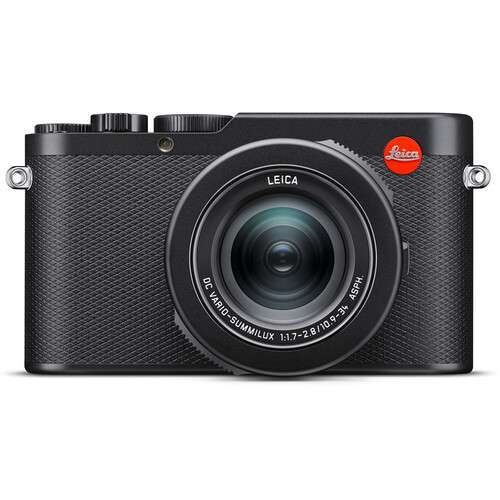
Specifications
- Sensor: Micro Four Thirds, 17MP
- Lens: 24–75mm f/1.7–2.8 equivalent
- Screen: 3-inch fixed, 1,240k dots
- Viewfinder: EVF
- Continuous Shooting: 11 fps
- Max Video Resolution: 4K
- User Level: Entry/enthusiast
Pros
- Most accessible entry point to Leica
- Responsive and bright zoom lens
- Sleek, classic Leica design in a small body
- Simple aspect ratio switch for formatting flexibility
Cons
- 17MP sensor is low for heavy cropping or giant prints
- Dated video quality compared to competition
- Autofocus lags behind modern rivals
Buy It If
- ✅ You need maximum portability with Leica’s design and signature look.
- ✅ Social media creators who benefit from rapid aspect ratio switching.
- ✅ You want a fixed-lens Leica for everyday shooting without breaking the bank.
Don’t Buy It If
- ❌ You frequently crop or print at large sizes.
- ❌ You need robust video functionality or lightning-fast autofocus.
In Depth Review
The Leica D-Lux 8 is the answer for those who have longed to own a Leica but found flagship models out of reach. Carrying forward the clean design of its predecessors, this camera marries Leica’s restrained aesthetic with a pragmatic set of features—most notably, a fast and flexible zoom lens spanning wide to short telephoto, ideal for daily documentation or travel.
Ergonomically, it offers a pared-back experience—a minimalist interface modeled after Leica’s more expensive compacts but with enough modern control to shoot in challenging conditions. The newly redesigned menu and OLED viewfinder are welcome touches, streamlining the user journey.
While the D-Lux 8 is not the most powerful in terms of resolution or autofocus speed, the lens is sharp and responsive, and the aspect ratio control on the lens barrel is brilliant for quick social sharing. It captures the Leica look—crisp, contrast-rich images that are vibrant without being garish. Although video and sensor resolution can’t compete with top-end compacts, the D-Lux 8 delivers honest, punchy photos at a price point that finally makes Leica accessible.
Best For
- Beginners, travelers, and social creators
- Enthusiasts wanting their first Leica without the full investment
- Those seeking an all-rounder pocket camera with historic flair
Leica D-Lux 8 Digital Camera at B&H, Adorama.
5. Leica Sofort 2 — Best Leica Instant Camera
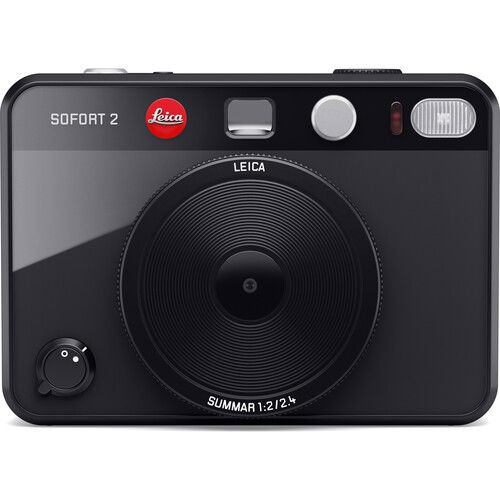
Specifications
- Type: Hybrid instant digital camera
- Film Type: Instax Mini
- Image Size: 2.4 x 1.8″
- Lens: 28mm f/2 equivalent
- Minimum Focus Distance: 3.9″
- Flash: Built-in
- User Level: Beginner
Pros
- Ultra-stylish design—premium look and feel
- Hybrid operation (instant prints + digital copies)
- Fun filters, compact, and portable
Cons
- Digital image quality is modest (4.9MP sensor)
- Pricier than most instant camera alternatives
Buy It If
- ✅ You want the most eye-catching, premium instant camera available.
- ✅ You like sharing prints and digital images instantly, directly from your camera or via smartphone.
Don’t Buy It If
- ❌ You’re looking for the best value or highest digital quality (cheaper alternatives available).
- ❌ You prioritize top-notch instant print/image quality over design and brand.
In Depth Review
Instant photography has enjoyed a huge resurgence, but nowhere is it as chic as with the Leica Sofort 2. Sporting Leica’s sleek, minimalist design language, this camera stands out in a market crowded with plastic-bodied competitors by offering a true luxury aesthetic and intuitive physical controls. As a hybrid, the Sofort 2 shoots digital images and lets you print your favorites on Instax Mini film with in-camera filters for playful or creative looks.
Performance-wise, digital files are basic, making it more of a fun companion than a serious imaging device. However, pairing it via app to your phone makes sharing unique prints or digital copies with friends and family effortless. It’s at parties, gatherings, and family events that the Sofort 2 shines—creating instant, tangibly memorable keepsakes in a camera that’s as enjoyable as it is stylish.
The price is steep for the instant category, but for anyone who values design, heritage, and a camera that sparks conversation, the Sofort 2 is best in show.
Best For
- Parties, weddings, and casual gatherings
- Fans of on-the-go prints with digital sharing capabilities
- Leica devotees who don’t want to sacrifice style, even for fun
Leica SOFORT 2 Instant Camera at B&H, Adorama.
6. Leica SL3-S — Best ‘Affordable’ Mirrorless Leica
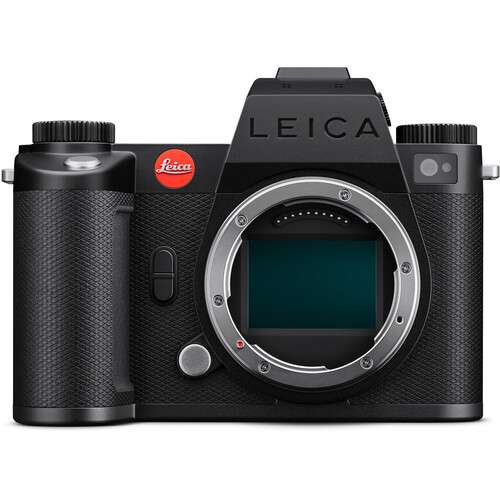
Specifications
- Type: Mirrorless
- Sensor: 24MP full-frame BSI CMOS
- Lens Mount: L-mount
- Continuous Shooting: Up to 30 fps
- Max Video Resolution: 6K Open Gate
- User Level: Professional/Advanced Amateur
Pros
- Dual Base ISO for flexible shooting in all lighting conditions
- Cinema-worthy 6K open gate video and 30 fps still bursts
- IP54 weather sealing for rugged use
- Superior low-light performance in class
Cons
- Tilt-only screen
- Noticeable rolling shutter in fast readout
- Shares much of its DNA with less expensive Panasonic models
Buy It If
- ✅ You seek a powerful hybrid camera with robust video and still capabilities.
- ✅ Budget is a concern—this gets you into the Leica SL system for less than the SL3.
- ✅ Designed for content creators who switch between video and stills.
Don’t Buy It If
- ❌ You need 8K video.
- ❌ You require a compact form factor or lighter kit.
In Depth Review
The Leica SL3-S proves that you don’t need to max out the credit card to enter the world of full-frame Leica mirrorless systems. Compared to its big brother, it sacrifices some headline specs but retains exceptional performance, offering both pro-level stills and video. The new 24MP BSI sensor produces class-leading dynamic range and color, with the option for high-res pixel shift when needed.
Video is a strong suit—6K open gate, strong codecs, and pro audio/mic support cement the SL3-S as a real hybrid tool. The autofocus and burst speed improvements ensure that sports, wildlife, and action shooters aren’t left behind. Though it borrows some features from Panasonic’s S5 line, the differences are meaningful in handling, color, and build.
Weatherproof and ready for a life on set or outdoors, the SL3-S is both inspiring to use and formidable in performance. If your creative journey merits a Leica, but your budget calls for realism, this is your gateway.
Best For
- Content creators, videographers, and event shooters
- Photographers entering the Leica mirrorless ecosystem
- Those wanting a versatile, weather-sealed hybrid camera
Leica SL3-S Mirrorless Camera at B&H, Adorama.
7. Leica M11-P — Best for AI-Protection

Specifications
- Type: Rangefinder
- Sensor: Full-frame, 18/36/60MP triple-resolution
- Lens Mount: Leica M
- Autofocus: Manual only
- LCD: 3-inch fixed touchscreen
- Viewfinder: Direct vision optical, optional Visoflex 2 EVF
- User Level: Expert
Pros
- Classic styling without the iconic Leica red dot—ultimate discretion
- Advanced Leica Content Credentials for image authentication
- Peerless lens quality and tactile shooting experience
- Flexible resolution outputs and premium build
Cons
- Exclusively manual focus, no video
- Content Credentials—as anti-AI tech—are still evolving
- Holding comfort is limited for longer shoots
Buy It If
- ✅ Image authenticity is paramount for your work
- ✅ You desire every bit of Leica’s craftsmanship, plus the latest technology
- ✅ You want the quietest, most subtle Leica for street shooting
Don’t Buy It If
- ❌ You need video or autofocus.
- ❌ You plan to rely solely on AI-protection (as the tech is new and still being refined).
In Depth Review
The M11-P refines the M11 formula for photographers concerned with the integrity of their digital images. With Leica’s new Content Credentials, every image is digitally signed at the point of capture, preserving an unbroken chain of authenticity through editing and sharing. This innovation is timely in a world increasingly threatened by deepfakes and misuse of AI-altered imagery, giving professionals and editors a potentially invaluable tool.
Beyond this, the M11-P exudes classic Leica understatement—no red dot, discreet all-black finish, and minimal branding. Inside, it’s identical to the standard M11, with superb color, triple-resolution RAW/JPG output, and mastery of mechanical engineering. The build is impeccable and the act of shooting—as always with M bodies—utterly tactile, fulfilling, and deeply personal.
This is the camera for professionals who work in documentary, journalism, or any sphere where credibility is non-negotiable. The only caveat is that the new content credentials system is not yet foolproof. If you seek the ultimate in digital Leica purity and want to future-proof your work, the M11-P is peerless.
Best For
- Photojournalists and editorial shooters
- Fine art and street photographers who prize discretion
- Those pioneering robust digital image authenticity
Leica M11-P Rangefinder Camera at B&H, Adorama.
8. Leica M-A — Best Mechanical Camera

Specifications
- Type: Mechanical 35mm rangefinder (film)
- Lens Mount: Leica M
- Year Introduced: 2014
- Operation: Fully manual, no metering
- User Level: Expert/traditionalist
Pros
- Sublimely built, engineered for decades of use
- No battery, no electronics—absolute reliability
- Pure, tactile approach to film photography
Cons
- No light meter—take a handheld or trust your instincts
- No automation—requires skill and patience
- High price for a fully manual film camera
Buy It If
- ✅ You crave the purest analog shooting experience, devoid of distractions.
- ✅ You want a new film camera, freshly built for a lifetime of use.
Don’t Buy It If
- ❌ You need a built-in light meter.
- ❌ You’re new or prefer automated operation—start with simpler analog models.
In Depth Review
The Leica M-A is a paean to mechanical perfection. Released in a digital era, it strips away even the last hints of electronic innovation—a batteryless, meterless marvel that embodies photography in its most elemental, unchanging form. It’s not a camera for everyone: using it demands supreme concentration and a finely honed sense of light, as every shot is set and focused by hand.
But therein lies its beauty. To work with the M-A is to slow down and re-engage with the roots of image-making. The tolerances, tactile clicks, and mechanical feedback are unrivaled, the kind of craftsmanship that could easily last a century with care. The M-A is a tool for connection: to your subject, the moment, and the very history of photography itself.
Best For
- Analog purists and film revivalists
- Collectors and traditionalist Leica fans
- Photographers wishing to reconnect with the essence of shooting
Leica M-A (Typ 127) Rangefinder Camera at B&H, Adorama.
9. Leica MP — Best Film Camera
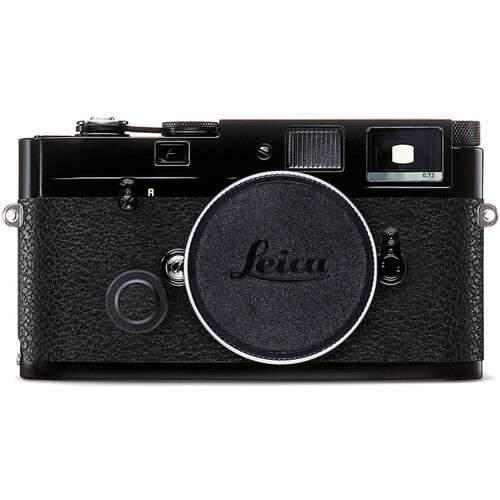
Specifications
- Type: 35mm mechanical rangefinder (film)
- Lens Mount: Leica M
- Year Introduced: 2003
- Light Meter: Built-in
- User Level: Expert/pro
Pros
- Masterpiece of mechanical engineering with in-built metering
- Blends the best of analog pure shooting with usability
- Revered reputation among professionals
Cons
- High price for camera and lenses
- Light meter battery is a minor inconvenience
Buy It If
- ✅ You demand a new mechanical film camera with a light meter
- ✅ You value Leica’s classic rangefinder charm and faultless construction
Don’t Buy It If
- ❌ You are budget constrained—this is a serious investment
- ❌ Beginners will be intimidated by fully manual operation and price
In Depth Review
The Leica MP combines the pure mechanical soul of the M-A with the convenience of a built-in, battery-powered meter—a boon in today’s film market, where reliable metering is rare. Every detail, from the brass top plate to the diamond-knurled dials, is made with a level of dedication unmatched in the industry.
Beyond mere materials and mechanics, what truly sets the MP apart is its feel. Shooting is immersive; every function speaks to muscle memory and anticipation. Despite some niggles—like the strangely located battery door—its core excellence is unchallenged.
For dedicated film lovers and those seeking a camera that will outlive their career, the MP stands as the most complete Leica film body available new today.
Best For
- Experienced analog shooters wanting the best available
- Professionals comparing new old stock versus vintage reliability
- Collectors and Leica legacy fans
Leica MP 0.72 Rangefinder Camera at B&H, Adorama.
10. Leica M11-D — Best Digital/Analog Experience

Specifications
- Type: Full-frame digital rangefinder
- Sensor: 18/36/60MP triple-resolution
- Lens Mount: Leica M
- Viewfinder: Optical, optional EVF
- LCD: None (screenless, digital/analog hybrid)
- User Level: Enthusiast/expert
Pros
- Incomparable “in the moment” shooting—no distractions
- Combines vintage spirit with digital files and security features
- Minimalist design, unmistakably Leica
Cons
- All settings and image review require app/phone
- Potential issues with smartphone connection
Buy It If
- ✅ You yearn for an analog workflow merged with digital convenience
- ✅ You enjoy being unique—the ultimate conversation piece and creative experiment
Don’t Buy It If
- ❌ You rely on on-camera menus and instant feedback
- ❌ Working without a rear screen or access to direct settings is a dealbreaker
In Depth Review
The Leica M11-D is more than just a screenless variant—it’s an artistic challenge, stripping digital shooting down to its analog essence. There’s no chimping, no menus, no distractions—just you, the viewfinder, and your subject. This approach both sparks creativity and hones intuition, forcing you to slow down, visualize your final image, and put trust in the process.
Leica has cleverly integrated wireless connectivity and CAI content authentication, ensuring image security in the digital age, while honoring analog ritual. The need to use the Leica Fotos app—for setup, settings changes, and image review—will alienate some, but for the dedicated, it’s liberating. In a world of instant everything, the M11-D is a breath of fresh, old-school air.
Best For
- Contemplative street and documentary shooters
- Photographers seeking digital results through an analog mindset
- Leica M fans wanting the most unique digital shooting experience
Leica M11-D Rangefinder Camera at B&H, Adorama.
11. Leica Q3 43 — Best for Natural Perspective
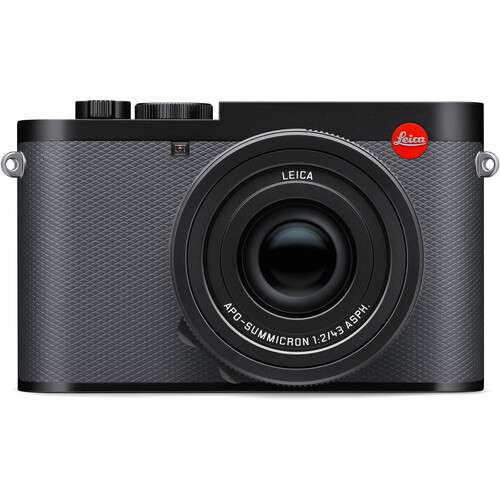
Specifications
- Type: Compact digital
- Sensor: 60MP full-frame CMOS
- Lens: Fixed 43mm f/2 APO
- LCD: Flip touchscreen
- Viewfinder: EVF
- Continuous Shooting: 15 fps
- Max Video Resolution: 8K30p, 4K60p
- User Level: Enthusiast/Pro
Pros
- 43mm lens delivers natural, “what the eye sees” perspective
- Exceptional image quality and color rendition
- Compact with robust build
Cons
- Limited to a single fixed focal length
- High price point—almost rivals some full pro bodies
- Handheld comfort is improved only with optional grip
Buy It If
- ✅ You want a premium everyday camera that mimics human vision
- ✅ You crave Leica quality in a discreet, fashion-forward form
Don’t Buy It If
- ❌ Budget is a major concern
- ❌ You prefer multi-focal or interchangeable lens versatility
In Depth Review
The Leica Q3 43 epitomizes the belief that less truly can be more. Its 43mm APO-Summicron lens approximates the field of view of the naked eye, yielding photographs that feel effortlessly natural. The sensor’s 60MP resolution means that, even when digitally cropping to longer lengths, image quality remains stellar.
The lens itself is a technical marvel: crisp, distortion-free, ideal for portraits, landscapes, or street scenes. Leica pairs it with advanced digital processing for lush color and tonality. Although the lack of optical zoom or swappable lenses could be limiting, the Q3 43’s purity, speed, and handling make it a joy—particularly for environmental portraiture or immersive reportage.
The only caveats are price and comfort—prolonged use almost necessitates the optional grip. Still, with its tactile controls, sleek styling, and the fact that every frame seems to possess that elusive “Leica look,” the Q3 43 earns its place as a singular photographic tool.
Best For
- Environmental portraitists, street, and documentary shooters
- Those seeking an all-in-one luxury compact
- Leica aspirants valuing form, function, and natural imaging
Leica Q3 43 Digital Camera at B&H, Adorama.
How to Choose the Best Leica Camera
Choosing a Leica is refreshingly straightforward given the brand’s clear, purpose-driven lineup. Start by reflecting on your shooting style, comfort with manual controls, lens preferences, and, of course, your budget.
- Manual tradition vs. modern automation: M-series rangefinders like the M11 and M11 Monochrom deliver the classic, hands-on experience—perfect for purists. If autofocus or speed is key, opt for the SL3 for professional mirrorless power, or the Q3/Q3 43 for fixed-lens convenience.
- Film vs. digital: Those who crave analog magic should look at the fully manual M-A or the metered MP, both unmatched for tactile satisfaction and mechanical reliability.
- Portability: On the go? The D-Lux 8 is Leica’s most accessible ticket, while Sofort 2 is unbeatable for fun, spontaneous photography.
- Authenticity and future-proofing: For those battling misinformation and fakes, the M11-P (Content Credentials) and M11-D (CAI integration) offer image authentication—a future-focused Leica first.
- Budget: Leica’s luxury is real, but the D-Lux 8 and SL3-S provide surprising affordability without sacrificing the signature Leica quality or experience.
Ultimately, the best Leica camera is one that fits your workflow and inspires you to create. Each model is an investment—not only in photographic capability, but in a tradition of seeing and capturing the world with clarity, integrity, and style.
Read more:
Source link


